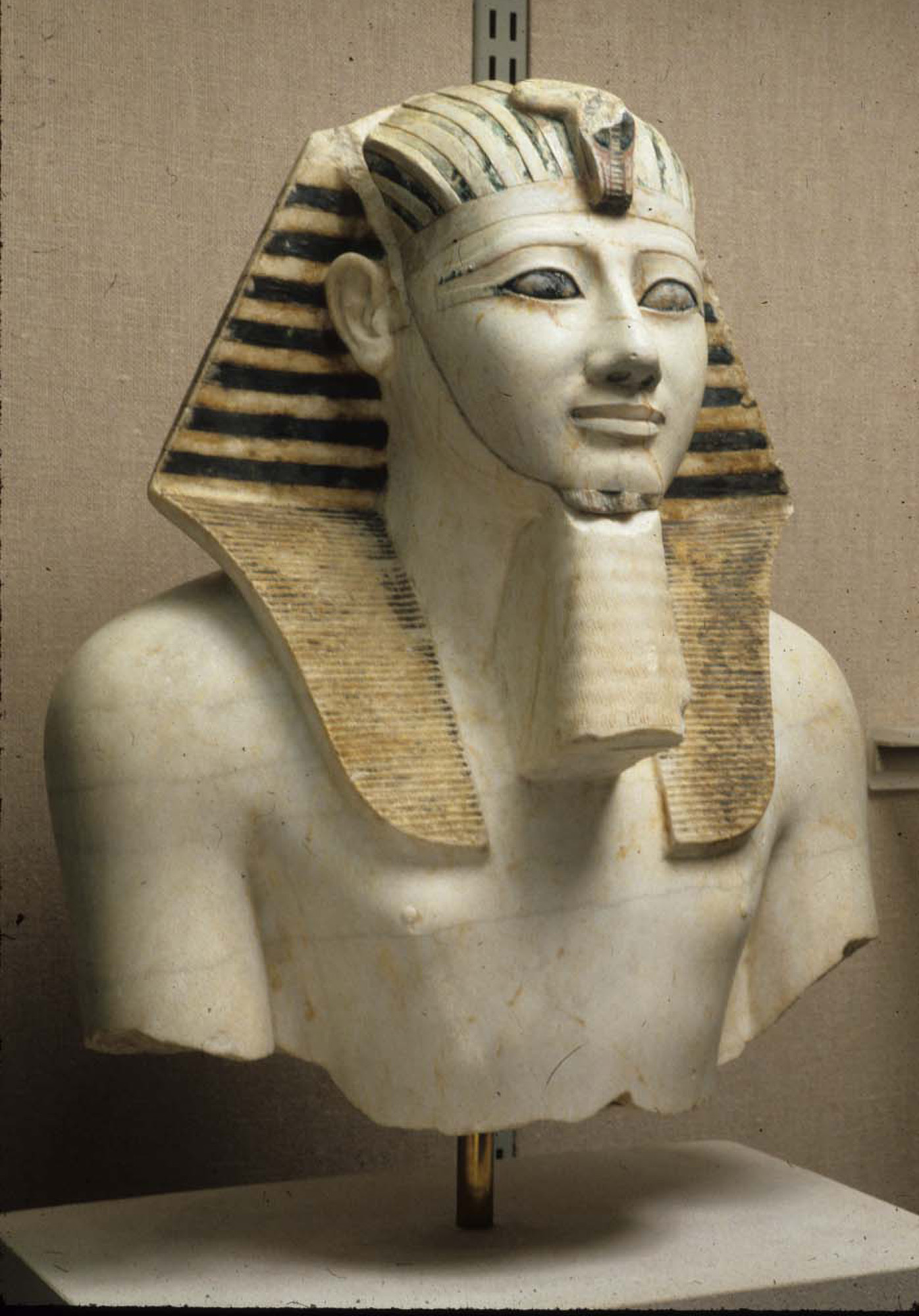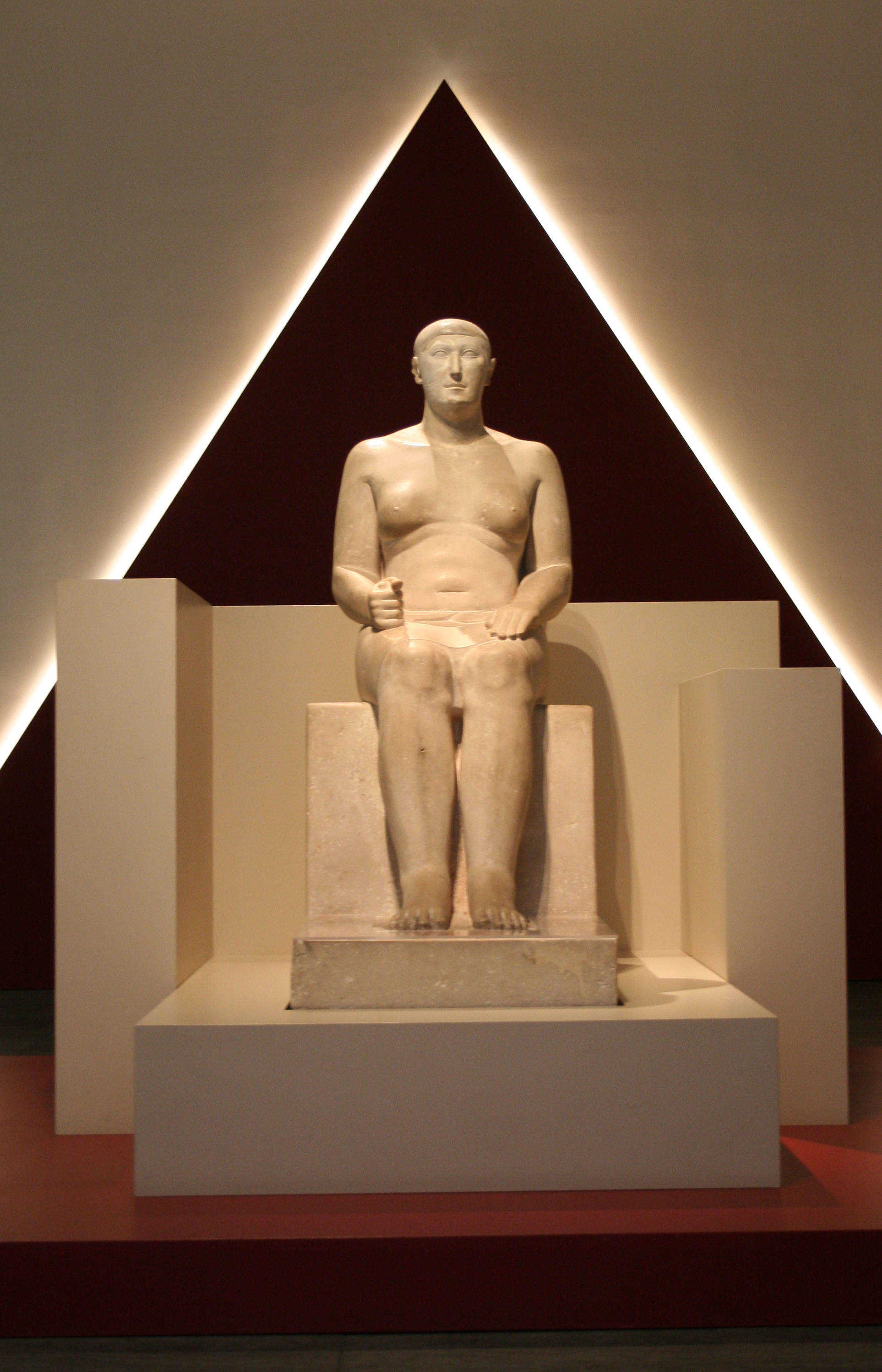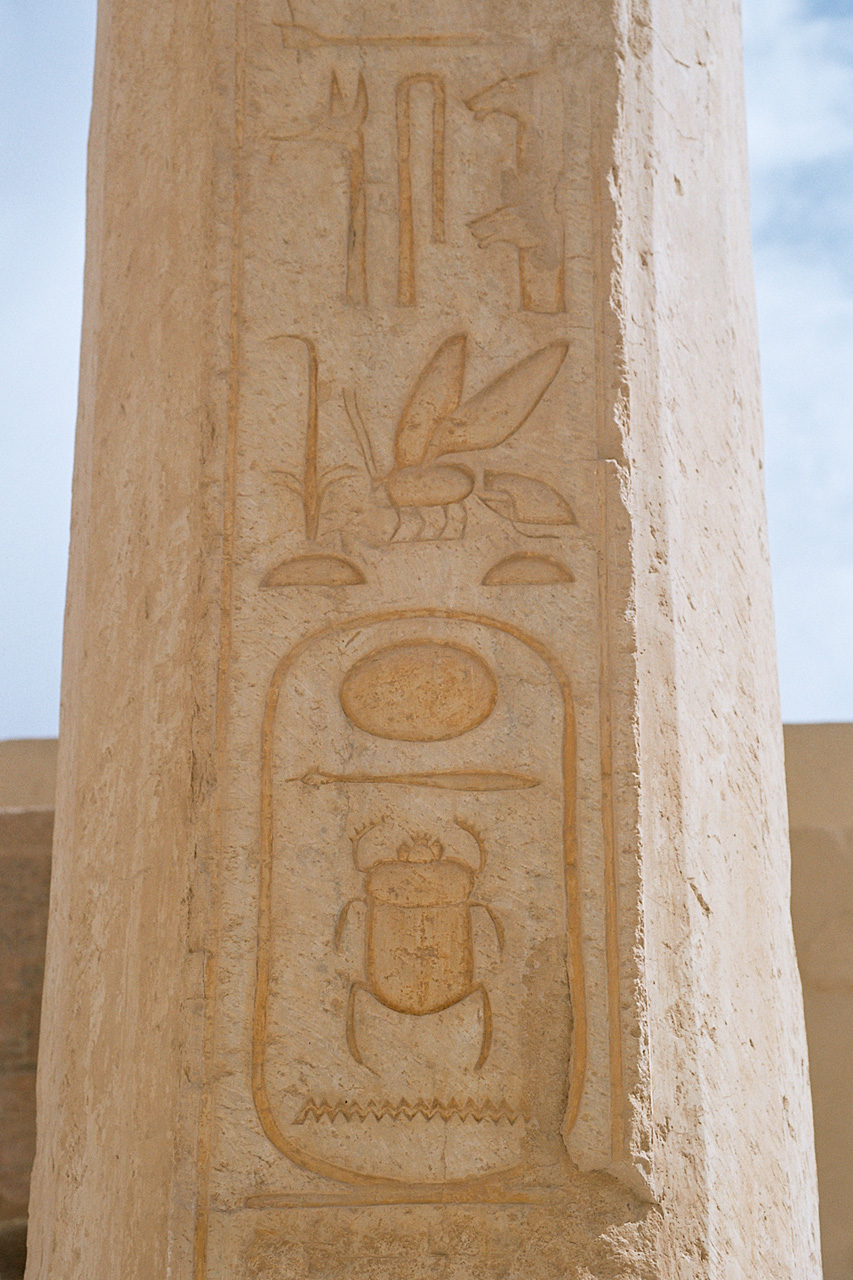|
Useramun, Called User
Useramen (also called User, Amenuser, or Useramun) was an ancient Egyptian vizier under pharaohs Hatshepsut and Thutmose III of the 18th Dynasty. Family Useramen was the son of the vizier Amethu called Ahmose, who served during the reign of Thutmose II and the early years of the combined reigns of Hatshepsut and Thutmose III.Hatshepsut by Anneke Bart His mother's name was Ta-amenthu. Useramen was married to a lady named Tuiu, and the couple is known from their tombs to have had at least four daughters and a son.Porter,B. and Moss R.L.B., Topographical Bibliography of Ancient Egyptian Hieroglyphic Texts, Reliefs and Paintings: The Theban Necropolis, Part One: Private Tombs. Second Edition. Griffith Institute. Oxford. 1994 Useramen came from a very influential family. His father w ... [...More Info...] [...Related Items...] OR: [Wikipedia] [Google] [Baidu] |
Amethu Called Ahmose
Amethu called Ahmose was a Vizier (Ancient Egypt), vizier of ancient Egypt. He served during the reign of Thutmose II and the early years of the reign of Hatshepsut and Thutmose III of the 18th Dynasty.Hatshepsut by Anneke Bart Family His wife's name was Ta-Amethu. Their children include the viziers Useramen and Neferweben. Two additional sons are known from Thebes, Egypt, Theban tomb TT122: Amenhotep, an Overseer of the Magazine of Amun, and Akheperkare, a prophet of Montu.Porter,B. and Moss R.L.B., Topographical Bibliography of Ancient Egyptian Hieroglyphic Texts, Reliefs and Paintings: The Theban Necropolis, Part One: Private Tombs. Second Edition. Griffith Institute. Oxford. 1994 Amethu called Ahmose and his wife Ta-Amethu also had several grandchildren. The lat ...[...More Info...] [...Related Items...] OR: [Wikipedia] [Google] [Baidu] |
Neferweben
Nebweben was an ancient Egyptian vizier of the North under pharaoh Thutmose III of the 18th Dynasty. Family Neferweben was the son of vizier Amethu called Ahmose, who served during the reign of Thutmose II and the early years of the combined reigns of Hatshepsut and Thutmose III. He was the brother of vizier Useramen and the father of vizier Rekhmire. Useramen is last attested in year 28 of Thutmose III, while Rekhmire is first attested as vizier in year 32. According to an older hypothesis Neferweben served as vizier in the intervening years. Dows Dunham, Three Inscribed Statues in Boston, The Journal of Egyptian Archaeology, Vol. 15, No. 3/4 (Nov., 1929), pp. 164-166 However, his canopic jar was found in Saqqara where he was most likely buried. The burial place indicates that he was a vizier with his office in the northern part of the country (during the New Kingdom the vizierate was divided into Upper (South) and Lower Egypt (North)). Vizier The vizier Neferweben ... [...More Info...] [...Related Items...] OR: [Wikipedia] [Google] [Baidu] |
Hatshepsut
Hatshepsut (; also Hatchepsut; Egyptian: '' ḥꜣt- špswt'' "Foremost of Noble Ladies"; or Hatasu c. 1507–1458 BC) was the fifth pharaoh of the Eighteenth Dynasty of Egypt. She was the second historically confirmed female pharaoh, after Sobekneferu. (Various other women may have also ruled as pharaohs or at least regents before Hatshepsut, as early as Neithhotep around 1,600 years prior.) Hatshepsut came to the throne of Egypt in 1478 BC. As the principal wife of Thutmose II, Hatshepsut initially ruled as regent to Thutmose III, a son of Thutmose II by another wife and the first male heir. While Thutmose III had inherited the throne at about two years old, Hatshepsut continued to rule by asserting her lineage as the daughter and only child of Thutmose I and his primary wife, Ahmose. Her husband Thutmose II was the son of Thutmose I and a secondary wife named Mutnofret, who carried the title 'King's daughter' and was probably a child of Ahmose I. Hatshepsut and Thutmos ... [...More Info...] [...Related Items...] OR: [Wikipedia] [Google] [Baidu] |
Thutmose III
Thutmose III (variously also spelt Tuthmosis or Thothmes), sometimes called Thutmose the Great, was the sixth pharaoh of the Eighteenth Dynasty. Officially, Thutmose III ruled Egypt for almost 54 years and his reign is usually dated from 28 April 1479 BC to 11 March 1425 BC, from the age of two and until his death at age fifty-six; however, during the first 22 years of his reign, he was coregent with his stepmother and aunt, Hatshepsut, who was named the pharaoh. While he was shown first on surviving monuments, both were assigned the usual royal names and insignia and neither is given any obvious seniority over the other. Thutmose served as the head of Hatshepsut's armies. During the final two years of his reign, he appointed his son and successor, Amenhotep II, as his junior co-regent. His firstborn son and heir to the throne, Amenemhat, predeceased Thutmose III. He would become one of the most powerful pharaohs of the 18th dynasty. Becoming the sole ruling pharaoh of the ... [...More Info...] [...Related Items...] OR: [Wikipedia] [Google] [Baidu] |
TT61
The Theban Tomb TT61 is located in Sheikh Abd el-Qurna. It forms part of the Theban Necropolis, situated on the west bank of the Nile opposite to Luxor. The tomb belongs to an 18th Dynasty ancient Egyptian named Useramen, who was a Vizier during the reigns of Hatshepsut and Thutmosis III. Porter, Bertha and Moss, Rosalind, Topographical Bibliography of Ancient Egyptian Hieroglyphic Texts, Statues, Reliefs and Paintings Volume I: The Theban Necropolis, Part I. Private Tombs, Griffith Institute. 1970 ASIN: B002WL4ON4>Hatshepsut by Anneke Bart See also * List of Theban tombsReferences [...More Info...] [...Related Items...] OR: [Wikipedia] [Google] [Baidu] |
TT131
The Theban Tomb TT131 is located in Sheikh Abd el-Qurna. It forms part of the Theban Necropolis, situated on the west bank of the Nile opposite Luxor. The tomb belongs to an 18th dynasty Ancient Egyptian named Useramen who was a Vizier during the reigns of Hatshepsut and Thutmosis III.Hatshepsut by Anneke Bart The aged Vizier Amethu (User's father) is shown with a chamberlain, courtiers and User as a scribe before Tuthmosis III, and a text records the installation of User as co-vizier.Porter,B. and Moss R.L.B., Topographical Bibliography of Ancient Egyptian Hieroglyphic Texts, Reliefs and Paintings: The Theban Necropolis, Part One: Private Tombs. Second Edition. Griffith Institute. Oxford. 1994 See also *[...More Info...] [...Related Items...] OR: [Wikipedia] [Google] [Baidu] |
Vizier (Ancient Egypt)
The vizier () was the highest official in ancient Egypt to serve the pharaoh (king) during the Old, Middle, and New Kingdoms. Vizier is the generally accepted rendering of ancient Egyptian , etc., among Egyptologists. The ''Instruction of Rekhmire'' (''Installation of the Vizier''), a New Kingdom text, defines many of the duties of the , and lays down codes of behavior. The viziers were often appointed by the pharaoh. During the 4th Dynasty and early 5th Dynasty, viziers were exclusively drawn from the royal family; from the period around the reign of Neferirkare Kakai onwards, they were chosen according to loyalty and talent or inherited the position from their fathers. Responsibilities The viziers were appointed by the pharaohs and often belonged to a pharaoh's family. The vizier's paramount duty was to supervise the running of the country, much like a prime minister. At times this included small details such as sampling the city's water supply. All other lesser supervis ... [...More Info...] [...Related Items...] OR: [Wikipedia] [Google] [Baidu] |
Thutmose II
Thutmose II (sometimes read as Thutmosis or Tuthmosis II, Thothmes in older history works in Latinized Greek; Ancient Egyptian: /''ḏḥwty.ms''/ ''Djehutymes'', meaning "Thoth is born") was the fourth Pharaoh of the Eighteenth Dynasty of Egypt. His reign is generally dated from 1493 to 1479 BC. His body was found in the Deir el-Bahri Cache above the Mortuary Temple of Hatshepsut and can be viewed today in the National Museum of Egyptian Civilization in Cairo. Family Thutmose II was the son of Thutmose I and a minor wife, Mutnofret. He was, therefore, a lesser son of Thutmose I and chose to marry his fully royal half-sister, Hatshepsut, in order to secure his kingship. While he successfully put down rebellions in Nubia and the Levant and defeated a group of nomadic Bedouins, these campaigns were specifically carried out by the king's Generals, and not by Thutmose II himself. This is often interpreted as evidence that Thutmose II was still a minor at his accession. Thutmose I ... [...More Info...] [...Related Items...] OR: [Wikipedia] [Google] [Baidu] |
Rekhmire
Rekhmire was an ancient Egyptian noble and official of the 18th Dynasty who served as "Governor of the Town" ( Thebes) and Vizier during the reigns of Thutmosis III and Amenhotep II, circa 1400 BCE. He was the nephew of Vizier User, who took office at the time of the fifth year of Queen Hatshepsut’s reign. User's official titles included mayor of the city, vizier, and prince. Rekhmire is noted for constructing a lavishly decorated tomb for himself in Sheikh Abd el-Qurna, part of the Theban Necropolis, containing lively, well preserved scenes of daily life during the Egyptian New Kingdom. His tomb is also important as it contains a full copy of a text detailing the duties of the office of the vizier, known as the Installation of the Vizier. He was also High Priest of Annu Heliopolis (I͗wnw, Iunu or 𓉺𓏌𓊖; egy, I͗wnw, 'the Pillars'; cop, ⲱⲛ; gr, Ἡλιούπολις, Hēlioúpοlis, City of the Sun) was a major city of ancient Egypt. It was the capital of the ... [...More Info...] [...Related Items...] OR: [Wikipedia] [Google] [Baidu] |


